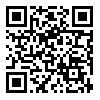Volume 10, Issue 2 (7-2018)
jorar 2018, 10(2): 58-73 |
Back to browse issues page
Download citation:
BibTeX | RIS | EndNote | Medlars | ProCite | Reference Manager | RefWorks
Send citation to:



BibTeX | RIS | EndNote | Medlars | ProCite | Reference Manager | RefWorks
Send citation to:
Shafiee M, Saleh H, Akbarpour S. Presenting the combination model of EFQM excellence model, balanced scorecard, and network data envelopment analysis to compile teamwork performance evaluation at Shiraz emergency bases
. jorar 2018; 10 (2) :58-73
URL: http://jorar.ir/article-1-474-en.html
URL: http://jorar.ir/article-1-474-en.html
Shiraz Branch, Islamic Azad University
Abstract: (3005 Views)
Background: Emergency department is the heart of a hospital and the regular conduct of the affairs can save lives. In addition, teamwork in healthcare is the way of organizing activities that adopts a widespread approach to health needs and provides potential capacities for full utilization of human resource abilities. Therefore, it is important to study the efficiency of the emergency department and dividing people into effective teams; and it needs an appropriate tool and management structure to take quantitative and qualitative scales. In this study, a mathematical model has been presented to assess the effectiveness of teamwork in emergency stations in Shiraz by combining three perspectives of EFQM excellence model, balanced scorecard, and Data Envelopment Analysis that includes the advantages of three models and covers their defects to some extent. Method: In the proposed model, empowerment and results of the EFQM excellence model and balanced scorecard have been used to determine the input and output indices and to distinguish the human resource efficiency indicators of the teams respectively. First, decision-making trial and evaluation laboratory (DEMATEL) and access to network structure have been used to determine the relation between the balanced scorecards. Finally, the Network Data Envelopment analysis model has been used to evaluate teamwork performance of bases staff in Shiraz emergency and to classify personnel into appropriate teams. Findings: In this research, three models including Network Data Envelopment analysis, Balanced Scorecard Analysis and EFQM Excellence Model were combined to identify performance assessment indicators of Shiraz emergency bases. Hence, while reducing the disadvantages the models benefits are strengthened, and a comprehensive model for evaluating the performance of this base was presented. Conclusion: According to the emergency standards, the personnel were categorized based on their total efficiency in four teams such as First Responder, Basic, Intermediate and Paramedic. The results presented that of the 141 emergency personnel, 18% should be in First Responder team, 61% in Basic team, 12% in Intermediate and finally 9% in Paramedic team.
Keywords: EFQM excellence model, balanced scorecard, network data envelopment analysis (DEA), performance evaluation, teamwork
Article Type: Research article |
Subject:
Psychological support in disasters
Send email to the article author
| Rights and permissions | |
 |
This work is licensed under a Creative Commons Attribution-NonCommercial 4.0 International License. |





